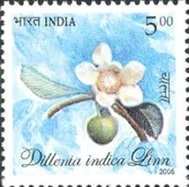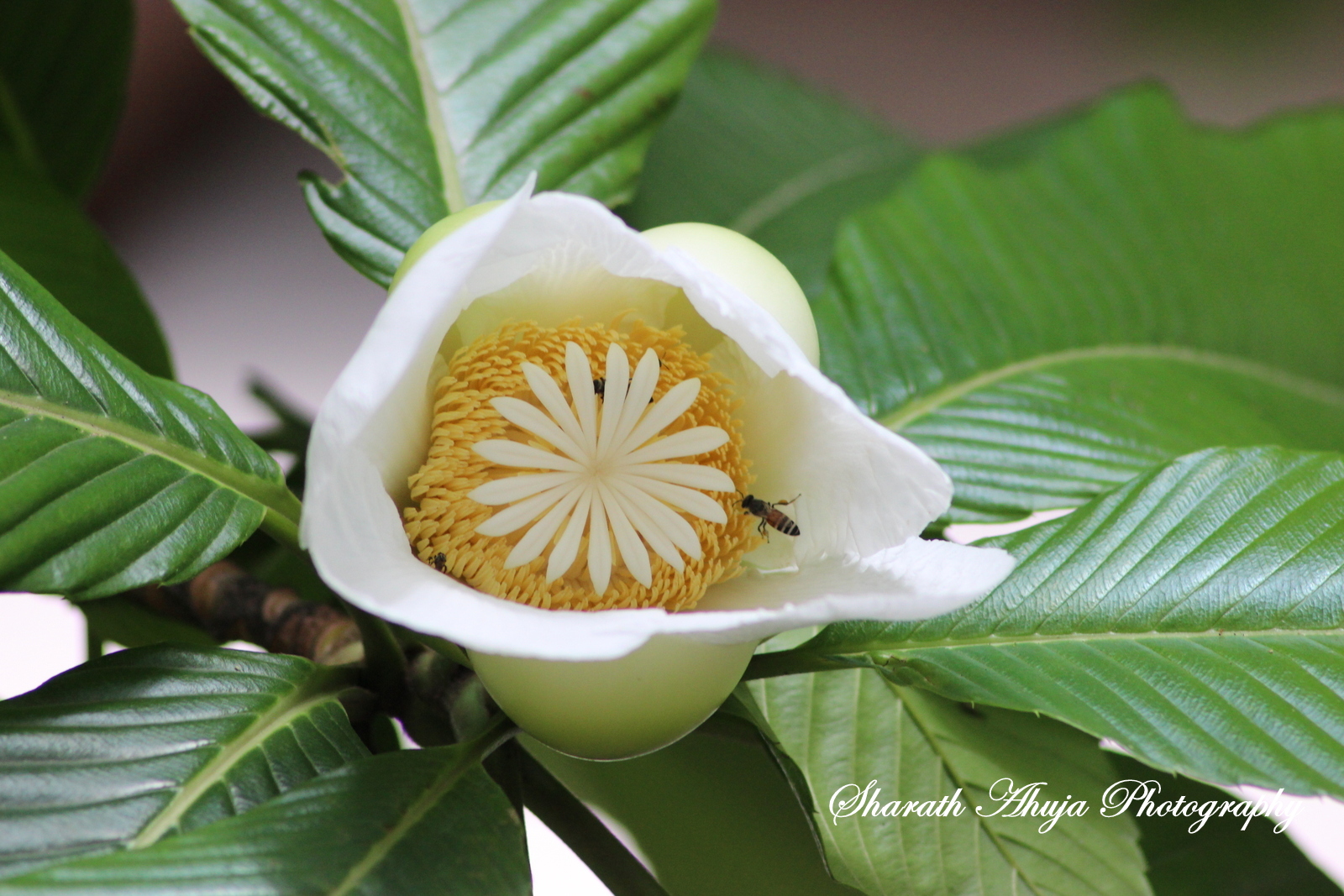Elephant-apple tree blooming in July in IISc
Elephant Apple – Dillenia indica
The genus was named by Swedish Botanist Linnaeus to honor Johann Jacob Dillenius (1684-1747), a German botanist and professor of Botany at Oxford.
Dillenia indica is a tree NATIVE TO INDIA

Postal Stamp by India Post on the
Elephant Apple -Dillenia indica
2006
The fruit of the Dillenia indica is much sought after by Elephants, hence the name, Elephant Apple.
From: http://www.flowersofindia.net/catalog/slides/Elephant Apple.html
Common name: Elephant Apple, Indian catmon, Hondapara Tree, Ma-tad
Kannada – Betta Kanagalu – Hindi: चलता Chalta, Karambel • Nepali: पांच फल Paanca phal, Panca kule, राम फल Ram phal, ठूलो तातरी Thulo tatri • Sanskrit: Avartaki • Nepali: पाँच फल Panch Phal, रामफल Raamphaal, चल्ता Chaltaa, पाँच कुले Paanch Kule, ठुलो तातरी Thulo Taataree Bengali – Chalta, Marathi – Karmal, Malayalam – Chilta, Tamil – Uva/Kurukatti Telugu – Uva.
Botanical name: Dillenia indica Family: Dilleniaceae (Karmal family)


Elephant Apple is an evergreen large shrub or small to medium-sized tree growing to 15 m tall. It is native to southeastern Asia, from India and Sri Lanka east to southwestern China and Vietnam, and south through Thailand to Malaysia and Indonesia. The leaves are 15-36 cm long, with a conspicuously corrugated surface with impressed veins, like potato chips.
The fragrant flowers are large, up to 5 inches across, with five white petals and numerous yellow stamens. Flowers arise solitary at the ends of the twigs, facing downward. The sepals are rounded and yellowish green. Flower pollinators are birds and bees.
The fruit is a 5-12 cm diameter aggregate of 15 carpels, each carpel containing five seeds embedded in an edible pulp. The fruit pulp is used in Indian Cuisine in curries, jam, and jellies. Leaves are used to polish Ivory. Juice is applied to the scalp to prevent baldness and the bark is used medicinally to treat mouth infection.
From: http://theindianvegan.blogspot.com/2012/10/all-about-elephant-apple.html
Origin of Elephant Apple
Elephant apple is native to Indonesia, but some expand its origin to encompass India, Sri Lanka, Bangladesh, southwestern China, Vietnam, Thailand, and Malaysia. Today, the fruit grows throughout Asia and even parts of Australia.
Availability of Elephant Apple in India
Elephant apple is a staple in the villages where the fruit grows, but isn’t well known in urban cities. The fruit grows in the northern tropical regions of India, particularly in Assam and Kolkata. Assam in particular utilizes elephant apple frequently in its cuisine.
Other parts of India growing elephant apple include the dry hill areas of Bihar, Odisha, Karnataka, Andhra Pradesh and Madhya Pradesh. The fruit also thrives in swamps, semi-tropical forests, and the evergreen forests of the sub-Himalayan tract from Kumaon to Garhwal.
The tree bears aromatic, magnolia-like flowers in June/July, then bears fruit from October through January.
All material in this write up has been sourced from the internet.
********






